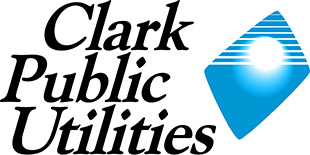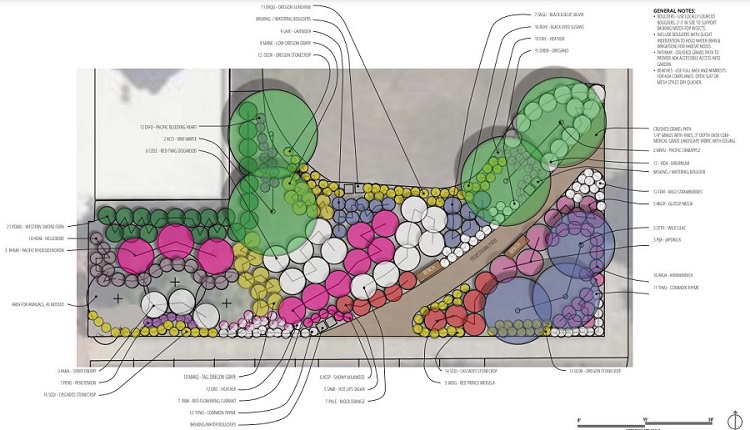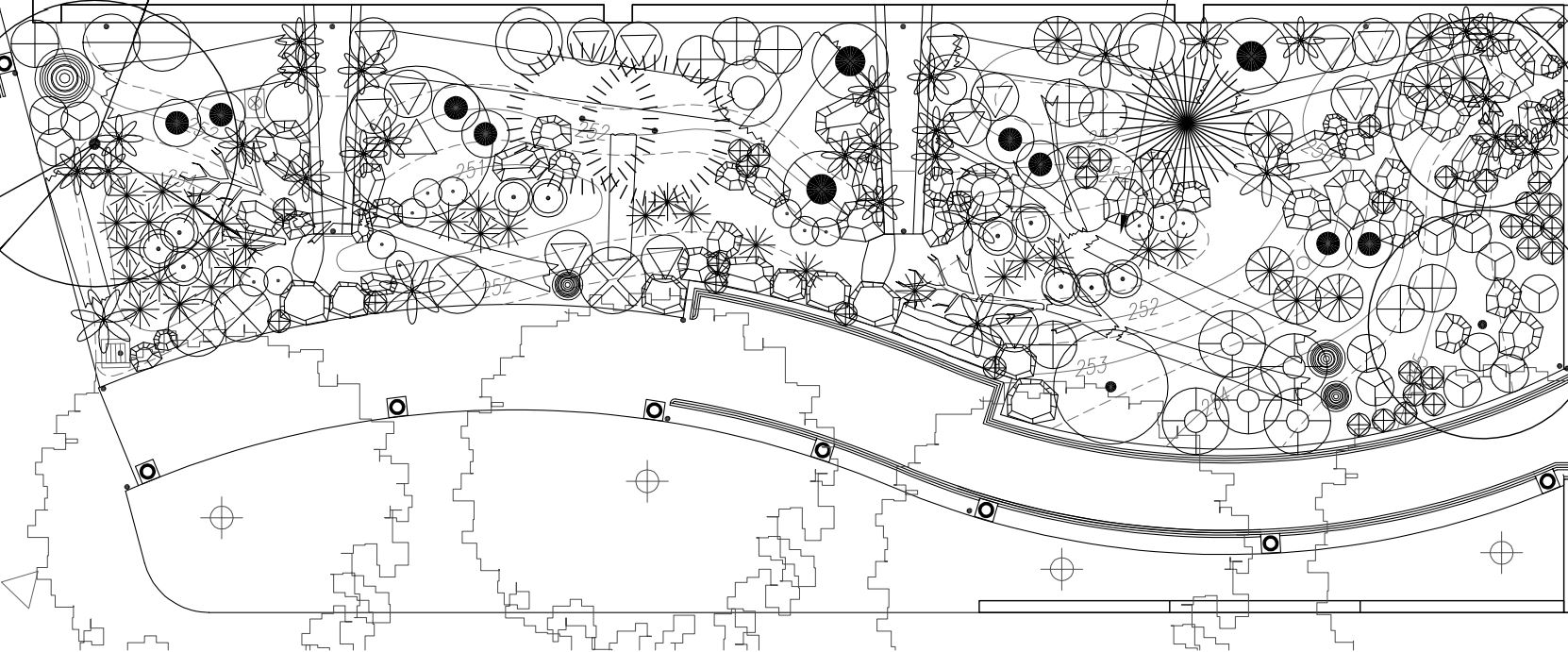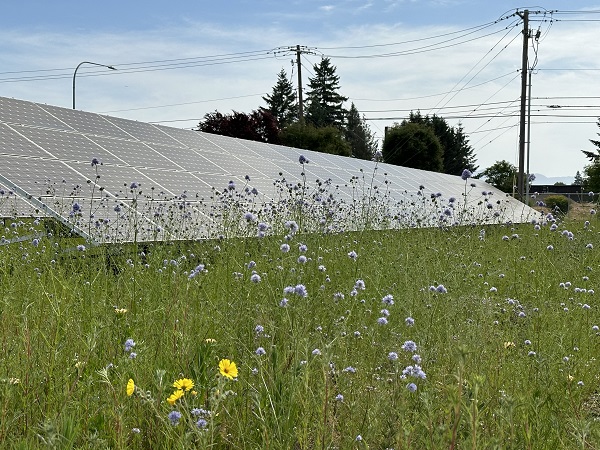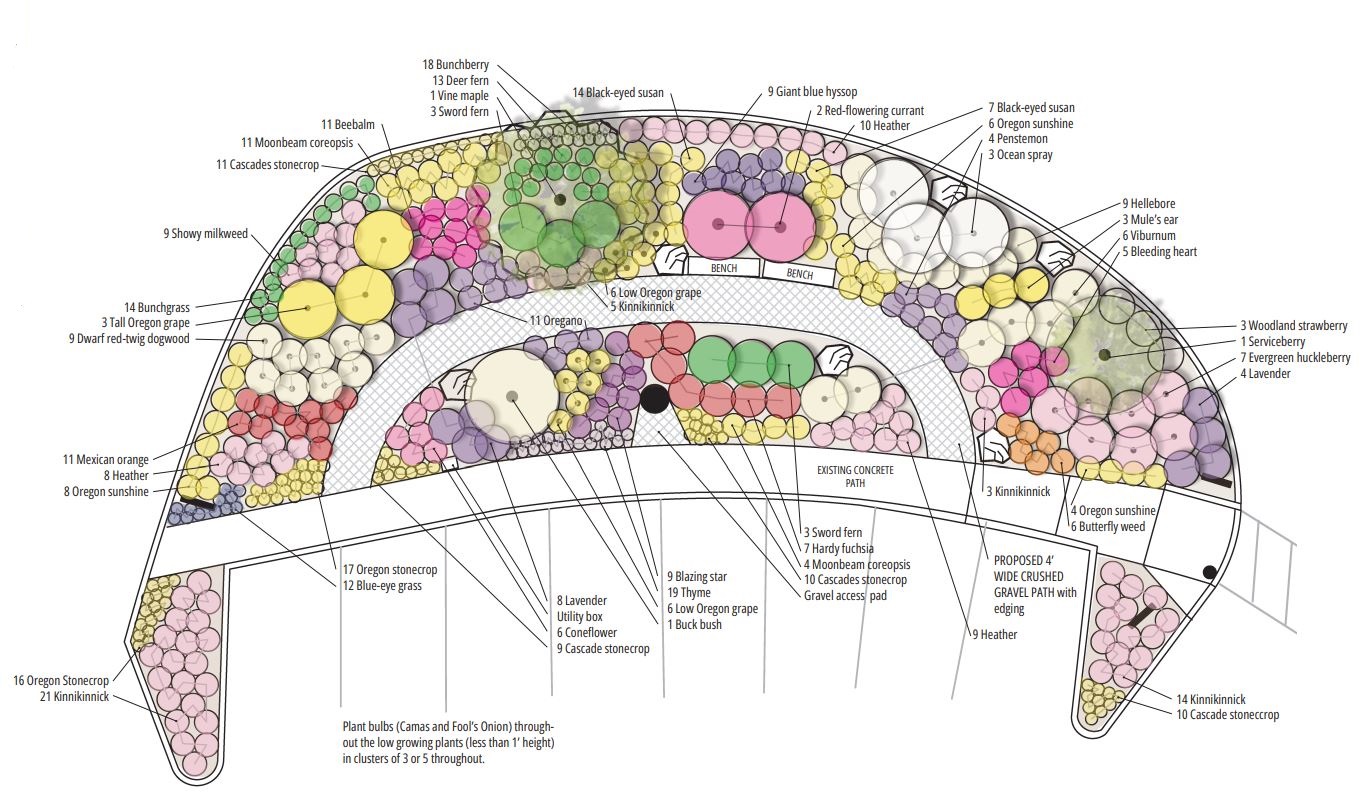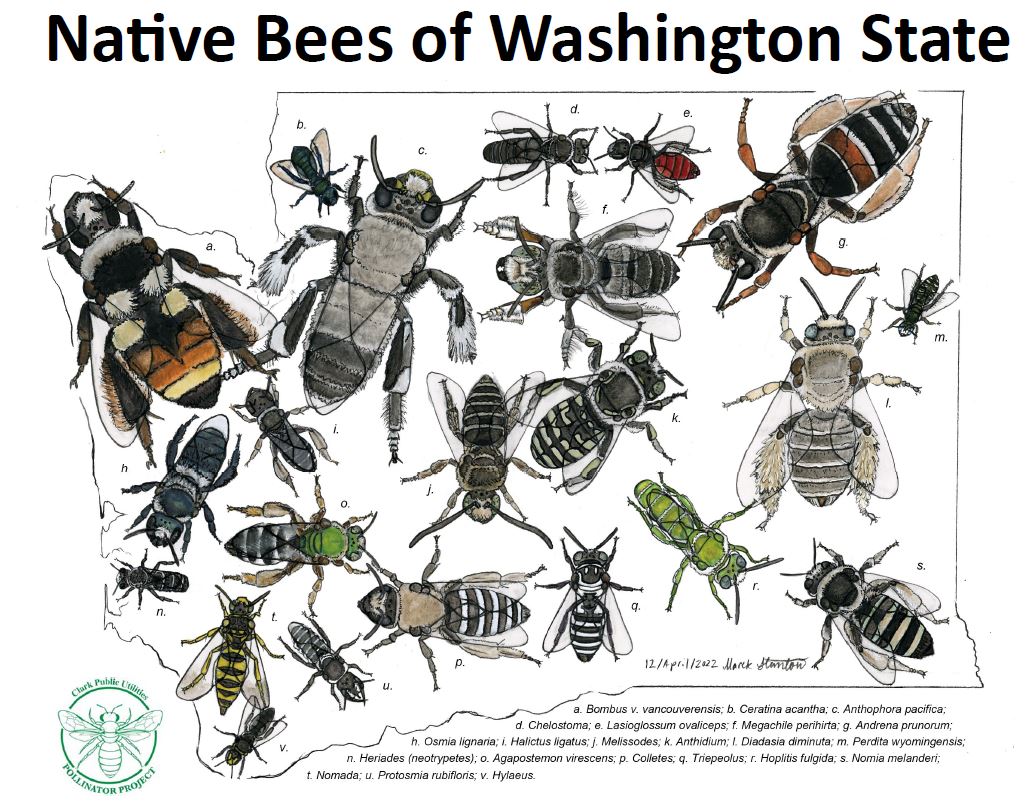The Pollinator Project
In 2021 Clark Public Utilities launched the Pollinator Project looking at how we could support native bees, butterflies, hummingbirds and other pollinators in our community. Our gardens are designed with many elements that can be easily incorporated into your own outdoor spaces.
Pollinator gardens are a great way to add interest and biodiversity to your home gardens or workplace landscape. These gardens are designed to provide nesting sites and resources that attract bees, butterflies, moths, flies, beetles, and even hummingbirds. These animals perform the crucial role of pollination–making it possible for much of our food and flowers to grow. Creating a pollinator garden for your home can be relatively simple, requiring low maintenance, and can have a very positive impact on our community.
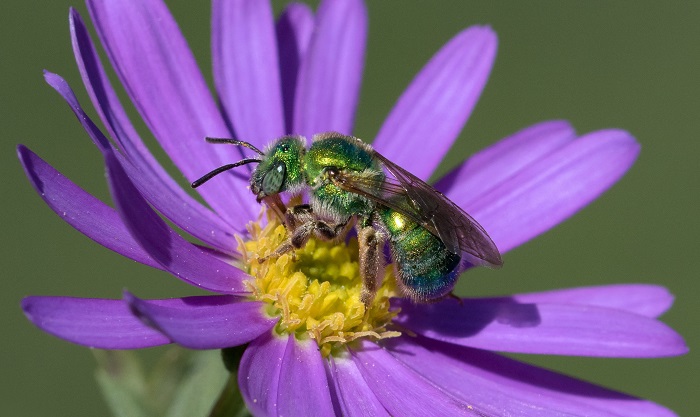
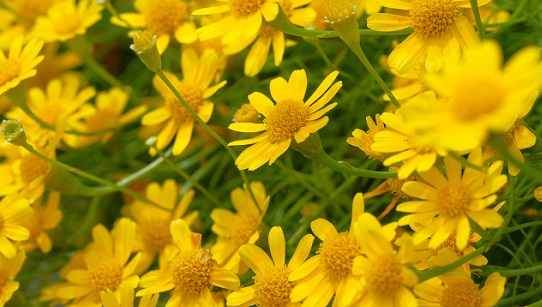
What Can We Do
Pollinators are facing the same environmental challenges as most species, including habitat loss and fragmentation, invasive species and diseases, and the overuse of pesticides. One of the cornerstone principles of restoring habitat for pollinators is planting the native plants on which local populations of bees and butterflies depend. Native plants are also preferred for a pollinator gardens because they are adapted to the local growing conditions, require less water and have fewer pests. The use of non-native plants with flowers can be used effectively to increase the amount of nectar and pollen that is available and to extend the bloom time.
Creating a Pollinator-friendly Landscape
- Use a wide variety of plants that bloom from early spring into late fall and group similar plants together rather than intermixing different varieties.
- Use native plants that are adapted to our region and have a variety of bloom types from open flowers like asters to tubular flowers such as penstemon.
- Avoid modern hybrid flowers, especially those with double flowers because they often lack nectar and pollen.
- Eliminate pesticides whenever possible.
- Include larval host plants in your landscape for butterfly and moth caterpillars to eat. Most of them only eat specific plants. This also means accepting some leaf damage.
- Provide nesting sites for native bees. 70% of bees nest in the ground so avoid using bark mulch. And consider not cutting back your spent perennial stems to the ground. The hollow stems provide sites for cavity nesters.
- Talk to your neighbors about the importance of pollinators and how to create healthy habitats.
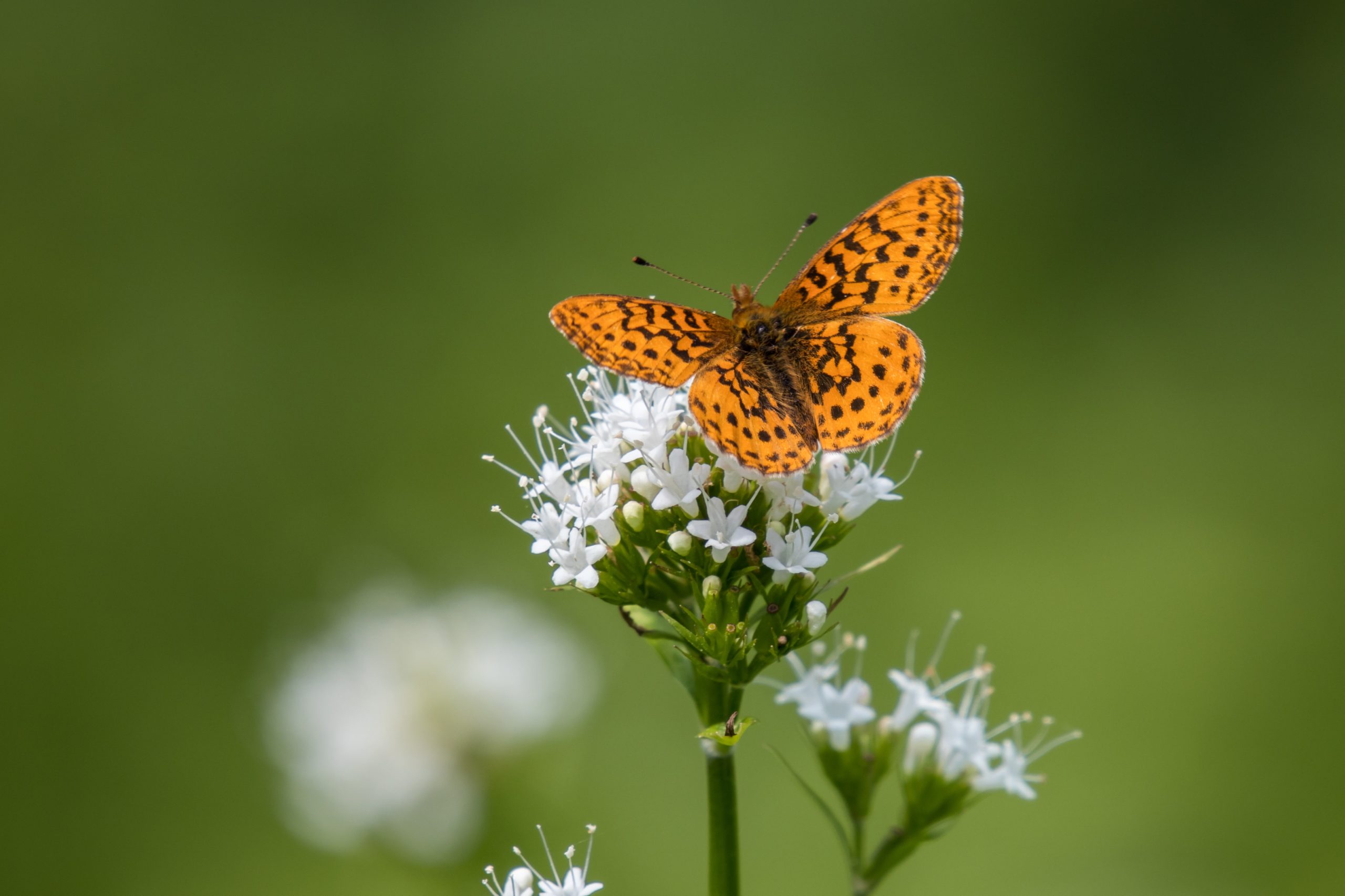
Operations Center Pollinator Garden
To encourage pollinators to visit our garden, we have provided plants that bloom throughout the season, larval host plants for caterpillars to feed on, a sunny location, shelter from the wind and most importantly, a pesticide-free environment. We also left bare soil for ground nesting bees.
We started with a variety of nectar-producing native and non-native plants that grow to different heights, with a wide range of flower shapes and colors. We imitated nature by massing multiples of each plant species lessening the distance pollinators need to travel between flowers. This mass planting technique will suppress weeds and increases the aesthetic appeal of the garden, creating drifts of color. For a list of the plants we used and what pollinators they attract, click here.
You are welcome to stop by the pollinator garden at the Operations Center at 8600 NE 117th Avenue in Vancouver during regular business hours for ideas and inspiration.
Operations Center Rain Garden
Rain gardens are shallow basins that collect water running off impervious surfaces like pavement and roofs. These gardens are designed to hold and filter rainfall, but are not meant to be permanent ponds. Using the power of gravity, rain gardens help water return to and seep into the soil, recharging our streams and groundwater.
The Operations Center Rain Garden was designed by our Environment Department and provides habitat for many animals. The native plants supply pollinators with nectar and pollen, and protects them from the wind. Trees and shrubs produce seeds and berries and serve as nesting sites for birds and mammals while also being host plants for many caterpillar species.
Community Solar Pollinator Meadow
Native bees and other pollinators are essential to the survival of many plant species in our surrounding environment. Given the large footprint of our community solar site, leveraging for its potential environmental benefits was an easy decision. Taking out the lawn, which required mowing and weed control and replacing it with a native meadow mix turned a lifeless site into a haven buzzing with biodiversity. Now this meadow becomes extremely valuable habitat, providing floral resources, nesting sites and a protected environment for many native bee species, moths and butterflies, and other insects. In addition, many birds and some amphibians also thrive on the food and shelter that a meadow ecosystem provides.
Meadows provide important ecosystem services including infiltration and filtration of stormwater, carbon storage, nutrient recycling, soil building, and provisioning of food and shelter for biodiverse communities of flora and fauna. By establishing native perennials and annuals in a dense and diverse meadow planting, property owners can enjoy the beauty of flowers throughout the season and experience a renewed connection with nature. Done properly, wildflower meadows are ecologically friendly landscape components that, once established, have reduced maintenance requirements.
The Community Solar Orchards Pollinator Meadow was planted in the fall of 2022 with native plants sourced locally. For a list of those plants click here.
Community Solar is a different model for solar energy. Community Solar brings together a group of participants to build one larger solar array, and all subscribers benefit from the renewable energy generated. Combining renewable energy production with a pollinator meadow is a win-win-win for the environment, pollinators, and our customers.
Electric Center Pollinator Garden
In 2022 we expanded the number of pollinator gardens at Clark Public Utilities with a kidney bean-shaped space showcasing many of the native plants that provide resources our pollinators rely on. This garden is located just west of our front door and 75% of the vegetation is native to our ecoregion.
Washington state has thousands of pollinator species and many of those are specialists. They have evolved to use only certain native plants for food. For that reason, all pollinator gardens should primarily be planted with natives. Once again we used mass plantings to shade the soil and keep down the weeds. And the drifts of color create a pleasing design and attracts a wide variety of pollinators. To see our landscape plan, bloom times and a list of the plants we used and what pollinators they attract, click here.
We invite you to visit this pollinator garden located at the Electric Center at 1200 Fort Vancouver Way in Vancouver during regular business hours. And each year we will be adding more locations for you, and the pollinators to enjoy. So keep checking back with us.
Native Bees of Washington State
There are hundreds of wild bee species in Washington State. This amazing artwork shows twenty-two of the genera found in the state and Marek Stanton who is a member of the Washington Native Bee Society and the Oregon Bee Atlas designed it. He is also the person who designed the Oregon pollinator license plate.
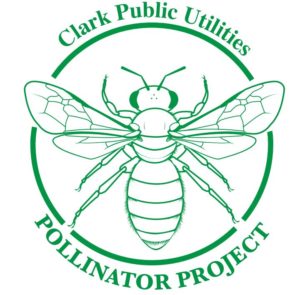 Our Commitment
Our Commitment
The Pollinator Project is part of Clark Public Utilities’ continued commitment to environmental stewardship and using resources responsibly to foster healthy habitats and support native wildlife. Please check out our other environmental programs and consider volunteering at one of the next events.
Explore and Learn More
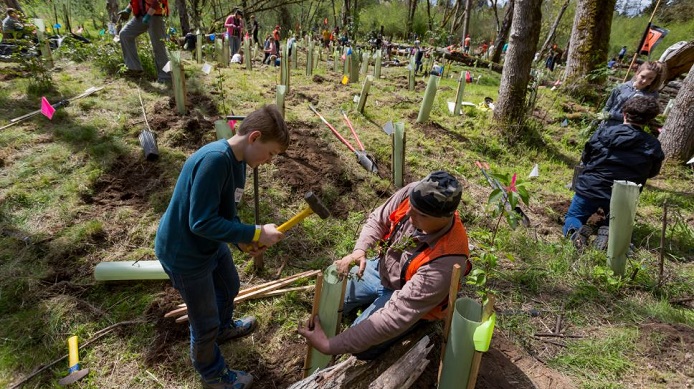
StreamTeam
StreamTeam is our volunteer-driven stream restoration program. Every year, volunteers plant more than 50,000 native trees and help educate community members. READ MORE ›
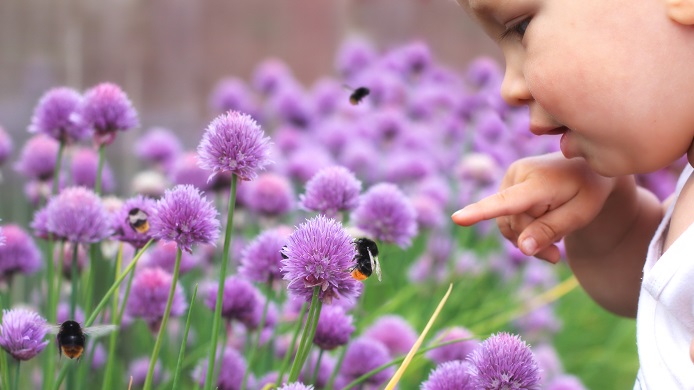
PowerZone
Know a child that is interested in pollinators and science in general? Have them check out our new website for children. Its full of lots of information as well as games and activities. READ MORE ›
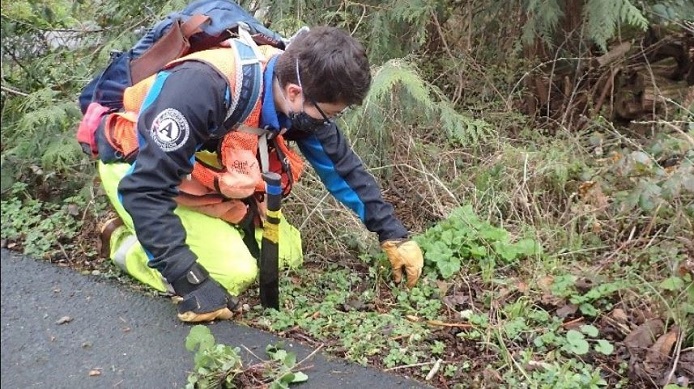
Eradication Nation
This grant-funded program focuses on removing aggressive, non-native plants like knotweed, invasive blackberry and canary grass. READ MORE ›
